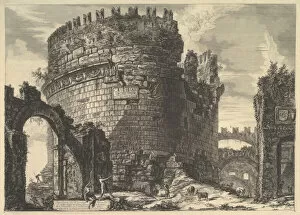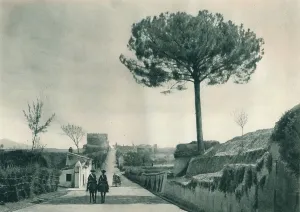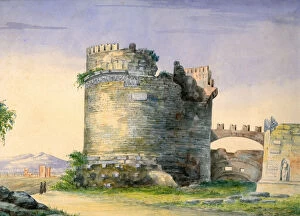Tomb Of Caecilia Metella Collection
The Tomb of Caecilia Metella stands as a timeless testament to the grandeur and elegance of ancient Rome
All Professionally Made to Order for Quick Shipping
The Tomb of Caecilia Metella stands as a timeless testament to the grandeur and elegance of ancient Rome. This iconic structure, captured in various forms by artists throughout history, continues to captivate viewers with its imposing presence. In Robert MacPherson's "Untitled (Ruin of a Round Fortress Building), " we catch a glimpse of the tomb's ruins, showcasing its remarkable architectural design. The means by which the large blocks of travertine and marble were lifted during its construction in 1756-57 remain an intriguing mystery that adds to its allure. A black and white photograph captures the essence of the Tomb of Caecilia Metella, emphasizing its enduring beauty against time's relentless march. An engraving further immortalizes this Roman landmark on the Appian Way, transporting us back to an era when it was still intact. Leon-Francois-Antoine Fleury's rendition from around 1830 breathes life into this ancient monument, allowing us to envision how it might have appeared in all its glory. Meanwhile, Cornelis van Poelenburch's painting "Christ Carrying the Cross" reminds us that even amidst such grandeur, mortality is inevitable. Demonstration panels reveal fascinating techniques employed for raising travertine blocks during construction—a testament to human ingenuity and engineering prowess. Giovanni Battista Piranesi's Vedute di Roma showcases another perspective on the tomb from ca. 1762, highlighting its significance within Rome's urban fabric. Plate 20: Tomb of Caecilia Metella called Capo di Bove (Ox Head) provides yet another angle on this magnificent structure—its name evoking images both powerful and enigmatic. Eugen Poppel’s artwork transports us to Italy in 1927 along Via Appia where we can almost feel ourselves walking alongside this awe-inspiring monument. Today, visitors can still marvel at the Tomb of Caecilia Metella in Rome, Italy.














